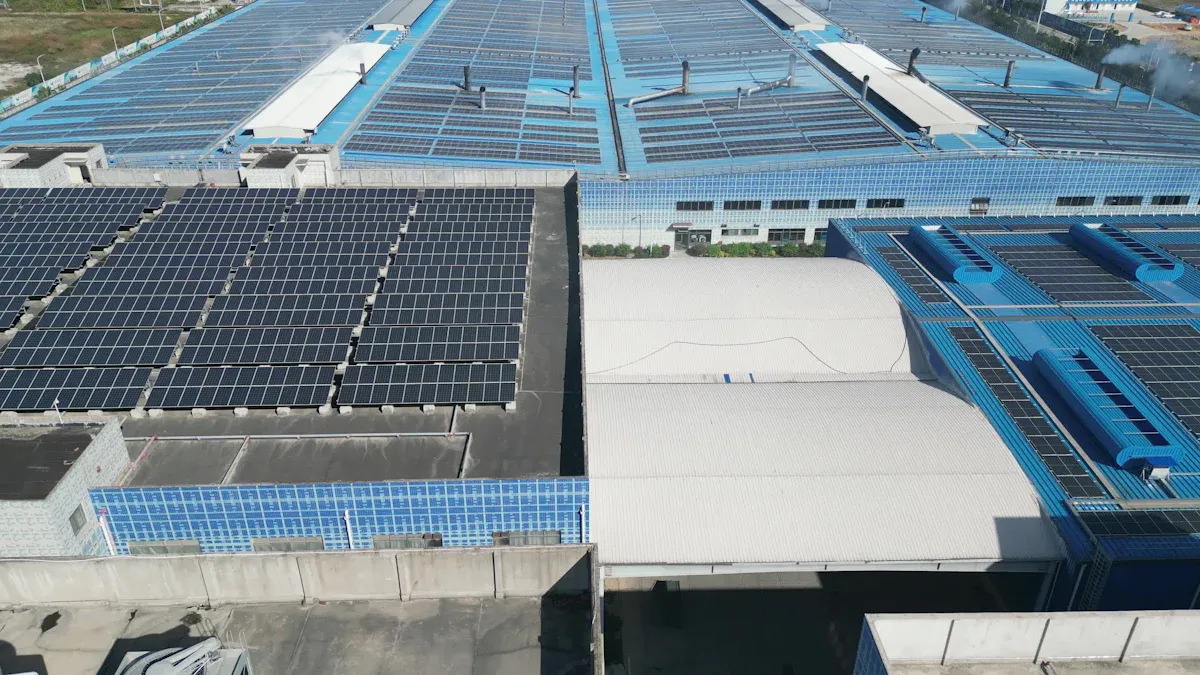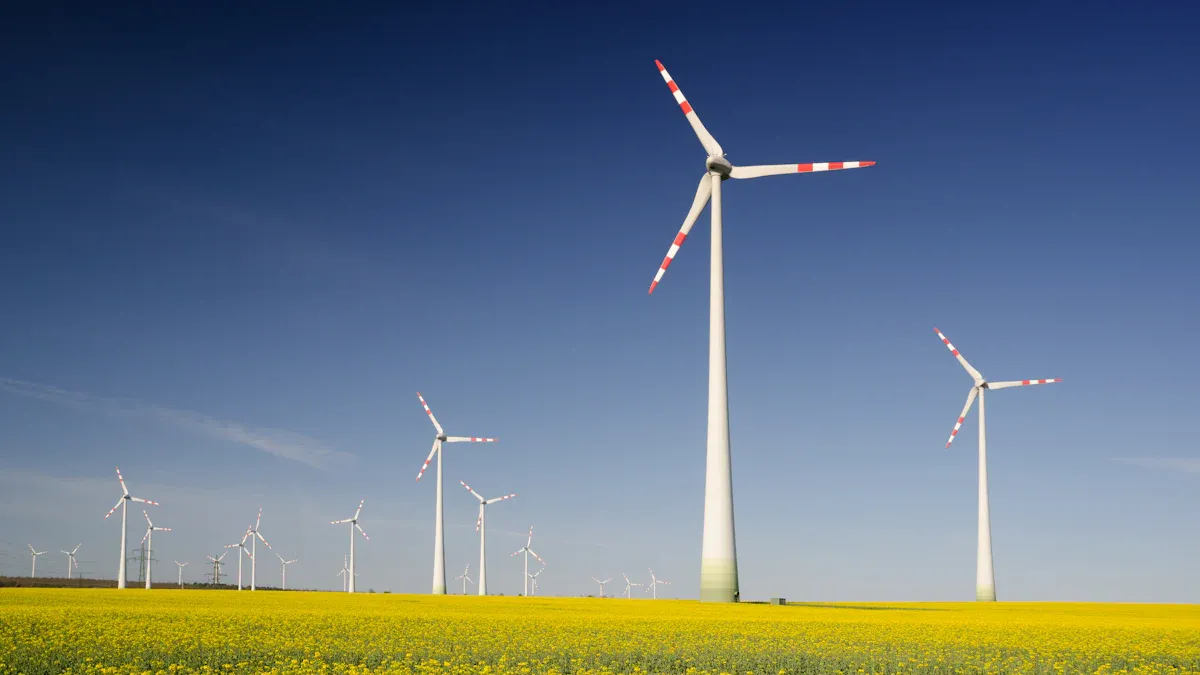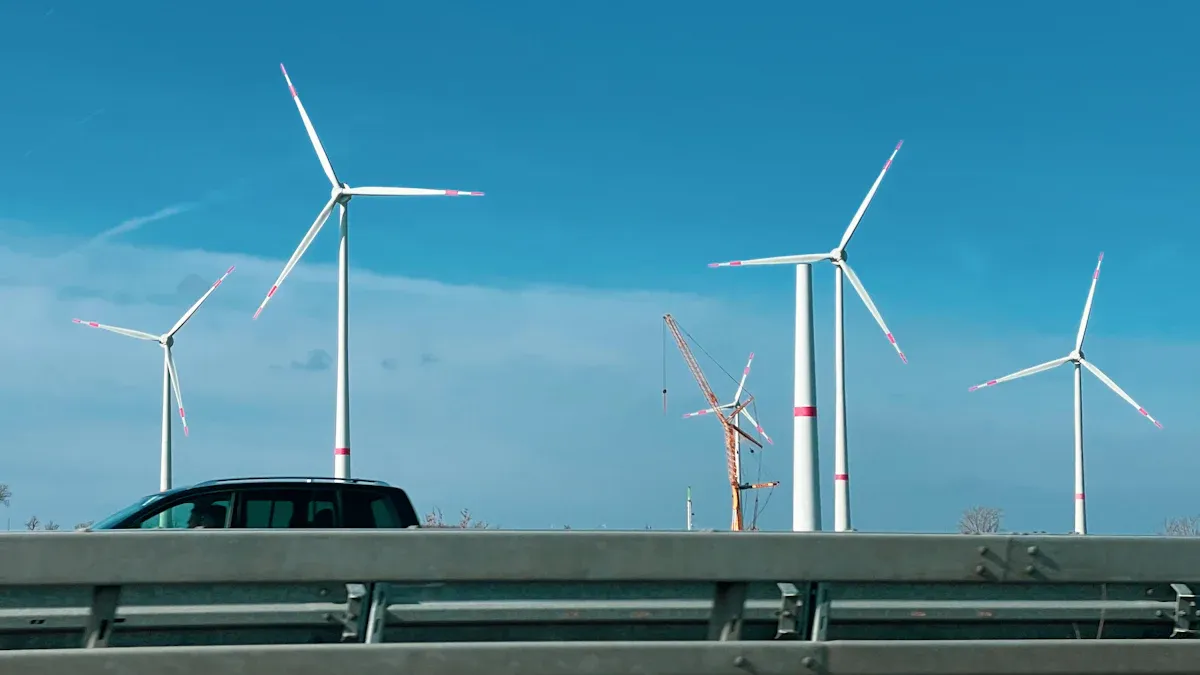
Energy-efficient PCBA manufacturing helps create a cleaner, greener future. Using less energy and eco-friendly methods reduces waste and pollution. This helps protect nature and supports long-term sustainability.
There are also money-saving benefits. Energy-efficient machines use less power and lower costs over time. Improving production steps and using materials wisely boosts efficiency. These changes save money and increase profits in PCB manufacturing.
Being eco-friendly also improves your company’s image. More customers care about green practices, making your efforts important for both the planet and your business.
Key Takeaways
Making PCBA with less energy cuts waste and helps nature.
Using energy-saving machines lowers power bills and grows profits.
Choosing green materials improves your brand and draws eco-friendly buyers.
Simplifying production uses less energy and makes work smoother.
Using renewable energy saves money and helps the planet.
Benefits of Energy-Efficient PCBA Manufacturing

Environmental Impact: Cutting Pollution and Reducing Waste
Making PCBs with less energy helps the environment. Using eco-friendly methods lowers pollution and waste. For example, switching to LED lights or better machines saves power. This reduces how much carbon your factory produces.
Cutting waste is also important. Recycling materials and using safer inks keeps harmful stuff out of landfills. Choosing green ways to make PCBs helps keep the planet clean. It also supports global goals for a healthier Earth.
Saving Money: Lower Costs and Bigger Profits
Using less energy saves money for your business. Upgrading to energy-saving machines might cost more at first. But over time, it lowers your electricity bills and saves money.
Green PCB methods also make production smoother. They cut waste and use resources wisely, which saves even more money. These savings can grow your profits and help your business compete better.
Building a Stronger Brand with Green Practices
Being eco-friendly makes your brand look better. Many people like companies that care about the planet. By going green, you can attract these customers and stand out.
The table below shows how green practices improve brand image:
What It Shows | Where It’s From |
|---|---|
Green methods help brands look better and attract eco-friendly buyers. | Rise of Electronics Manufacturing Industry: Key Factors and Services |
Using eco-friendly ways makes companies leaders in their field. | Navigating Sustainability Challenges in Electronics Manufacturing |
People prefer brands that care about the planet, boosting sales. |
By choosing green PCB methods, you build trust with customers. This trust leads to loyalty and helps your business grow.
Strategies for Achieving Energy Efficiency in PCBA Manufacturing
Optimizing Energy Use in Production Facilities
Using energy wisely in factories is very important. Start by checking how much energy your factory uses now. Tools like live tracking systems can show where energy is wasted. These tools help you fix problems, saving energy and cutting costs.
Methods like Six Sigma and Lean Manufacturing can also help. They use data to find where energy is being wasted. For example, adjusting reflow ovens saves energy while keeping product quality high. Fixing machines before they break also saves energy and reduces downtime.
To see your progress, use measures like Energy Use Intensity (EUI). These measures show how much energy is used per product or area. By focusing on these numbers, you can set goals and track improvements.
Tip: Simple changes, like using LED lights or better insulation, save energy.
Upgrading to Energy-Efficient Equipment and Machinery
Switching to better machines saves energy and works faster. New machines use less power but perform better. For example, advanced pick-and-place machines are quicker and more accurate, saving time and energy.
Better machines also improve quality. They make fewer mistakes, which means less waste and energy spent fixing errors. Many of these machines meet industry rules, keeping your factory competitive and eco-friendly.
The table below shows why upgrading machines is helpful:
Performance Metric | Impact of Upgrading Equipment |
|---|---|
Faster production and shorter cycle times | |
Enhanced Precision and Quality Control | Fewer mistakes and better product quality |
Cost Efficiency and Reduced Waste | Lower energy use and less material waste |
Flexibility and Adaptability | Handles complex designs and custom orders |
Improved Compliance with Industry Standards | Meets rules and regulations |
Enhanced Competitiveness | Quicker delivery and attracts more customers |
New machines may cost more at first, but they save money later. They lower energy bills and improve operations. Plus, they help your factory stay green and sustainable.
Adopting Green Materials and Eco-Friendly Components
Using green materials helps the planet and saves energy. Materials like halogen-free FR-4 and water-based solder paste are better for the environment. They also use less energy during production.
Making a list of material options can help you choose wisely. Look at things like heat resistance and strength to pick the best materials. This ensures they save energy and work well.
Testing is important when using new materials. Tests like heat and stress checks make sure they last long. For example, aging tests check weather resistance, and vibration tests ensure strength.
The table below explains why green materials are useful:
Benefit/Practice | Description |
|---|---|
Green materials save money over time. | |
Improved Energy Efficiency | Eco-friendly materials use less energy. |
Positive Brand Reputation | Green practices make customers trust your brand more. |
Material Optimization | Using materials wisely reduces waste. |
Eco-Friendly Material Selection | Choosing green materials helps save energy in production. |
Working with suppliers who care about the environment gives you more green options. This lowers your carbon footprint and makes your brand look better.
Note: Using modular designs and connectors without glue makes recycling easier and boosts sustainability.
Streamlining Processes to Save Energy
Making your processes smoother can cut energy waste in PCBA manufacturing. By working more efficiently, you save resources, lower costs, and help the planet. Here are some simple ways to improve your operations.
1. Review Your Workflow
Look closely at how your production works now. List each step in making PCBs and find problem areas. Are there delays between tasks? Are machines sitting idle too long? By reviewing your workflow, you can spot where energy is wasted and fix it.
Tip: Use tools like value stream maps to see problems clearly.
2. Use Just-in-Time (JIT) Manufacturing
JIT helps you avoid wasting materials and energy. It means getting parts only when you need them, not storing extras. In PCB production, order parts based on demand, not guesses. JIT saves energy, reduces waste, and improves cash flow.
3. Automate Repeated Tasks
Automation can make your work faster and use less energy. Machines for tasks like soldering or placing parts are quicker and more accurate than people. For example, automated pick-and-place machines reduce mistakes and save energy by working precisely.
4. Adjust Machine Settings
Changing machine settings can save a lot of energy. Match settings like temperature or speed to what each job needs. For example, reflow ovens use a lot of energy. Setting them to the right temperature saves energy without hurting quality.
5. Prevent Downtime
Broken machines waste energy and slow work. Regular checks and smart tools can stop this. Plan maintenance and use data to predict problems before they happen. This keeps things running smoothly and avoids wasting energy.
6. Train Your Team
Your workers are key to saving energy. Teach them how to use machines and materials wisely. Explain why green manufacturing matters and how they can help. A trained team will follow energy-saving steps every day.
Note: Small actions, like turning off unused machines, save lots of energy.
By improving your processes, you waste less energy and work more efficiently. These changes support green manufacturing and show your business cares about sustainability.
Addressing Challenges in Energy-Efficient PCBA Manufacturing
Managing Initial Costs of Energy-Efficient Upgrades
Switching to energy-efficient PCBA methods can cost a lot upfront. Buying new machines, using green methods, and training workers can be expensive. But with good planning, these costs can be handled.
Start by finding areas where upgrades will help the most. For example, replacing old machines with energy-saving ones lowers costs over time. Use tools like ROI (Return on Investment) to explain these expenses. Governments often offer tax breaks or rewards for using eco-friendly methods.
Plan upgrades in steps to reduce financial stress. Focus on machines that use the most energy, like reflow ovens or pick-and-place tools. Doing upgrades slowly spreads out the costs while still saving energy.
Challenge Type | Percentage of Manufacturers Facing Challenge |
|---|---|
Adoption of lead-free materials | |
Implementation of recycling programs | N/A |
Energy-efficient manufacturing | N/A |
Overcoming Resistance to Change Within Organizations
Changing to green methods can face pushback from workers. They might worry about losing jobs or learning new tasks. Solve this by creating teamwork and being open about changes.
Get your team involved early in the process. Share how energy-saving methods cut costs and improve quality. Train workers so they feel ready to use new tools and materials.
Studies show clear plans reduce resistance. For example, using ISO 14001 systems helps set clear steps for change. Teaching energy-saving habits also helps reach green goals faster.
Study/Source | Findings/Insights |
|---|---|
Concepción López Fernández and Serrano-Bedia (2007) | Showed how ISO 14001 needs clear steps for success. |
Mahapatra et al. (2018) | Found that worker habits affect energy-saving success. |
Ensuring Compliance with Environmental Regulations
Following environmental rules is key for green PCBA practices. Breaking rules can lead to fines, delays, or harm to your company’s image. To avoid this, set up a strong compliance plan.
Keep detailed records of energy use, waste, and emissions. This helps track progress and meet rules like ISO 14001. Using an Environmental Management System (EMS) makes this easier by setting clear policies.
Train workers on how to follow these rules. Teach them to use green materials and energy-saving machines correctly. Regular checks and updates keep your factory in line with changing rules.
Keeping good records helps avoid fines and rule-breaking.
ISO 14001 supports better environmental performance with clear tracking.
Training workers improves how well green methods are followed.
By solving these challenges, you can make your factory greener and more efficient. These changes help the planet and make your business stronger over time.
Innovation and Technology in Green Manufacturing Practices

Using Automation to Save Energy
Automation helps make pcba manufacturing use less energy. Machines can do repeated tasks faster and with less waste. For example, pick-and-place machines work accurately and reduce mistakes. They only run when needed, which saves power.
Robots improve quality by doing jobs like soldering perfectly every time. This means fewer errors and less fixing, saving energy and materials. Automation also tracks energy use in real time. It shows where energy is wasted and helps fix problems quickly.
Tip: Start by automating tasks that use the most energy, like soldering.
Smart Systems for Managing Energy
Smart energy systems help factories use power wisely. These systems collect data from sensors to show how energy is used. By studying this data, you can find waste and fix it.
These systems also help follow environmental rules, like ISO 14001. They track energy use and emissions to make sure your factory stays compliant. Smart systems can predict when machines might break and plan repairs early.
Benefit | What It Does |
|---|---|
Lower Costs | |
Better for the Environment | Uses clean energy and reduces pollution. |
Improved Efficiency | Makes energy systems work better and faster. |
Reliable Operations | Keeps machines running smoothly and avoids problems. |
Follow Rules | Helps meet environmental laws and avoid penalties. |
Smarter Decisions | Uses data to plan energy use and save resources. |
Using Renewable Energy in Factories
Renewable energy helps factories rely less on fossil fuels. Solar panels, wind turbines, and geothermal systems can power machines. This lowers pollution and saves money on electricity bills.
Renewable energy supports green goals and provides steady power. It also improves your brand’s eco-friendly image. Governments often give rewards for using renewable energy, which can help with costs.
Focus Area | Details |
|---|---|
New Materials | Use eco-friendly materials for PCB manufacturing. |
Green Processes | Switch to cleaner ways of making products. |
Rules and Laws | Learn about new regulations like ESPR and DPP in Europe. |
Global Impact | See how local rules affect worldwide manufacturing. |
Cost Savings | Green methods can lower operating costs. |
Note: Combining renewable energy with smart systems saves more energy and reduces waste.
Using energy-saving methods in PCBA manufacturing helps the planet. It cuts energy use and uses eco-friendly ways to make products. These steps lower harm to nature and make work more efficient. They also save money over time. For example, companies with good ESG practices save 5-10% on costs and grow their market share by 6%.
Fact or Benefit | Number |
|---|---|
ESG boosts return on equity | 5.4% |
Better water management gives higher returns | 67% |
Cost savings for strong ESG companies | 5-10% |
Market share growth from ESG efforts | 6% |
People like brands that care about the planet | 88% |
Going green also makes your brand look better. More people now choose businesses that care about the Earth. By using smart ideas and eco-friendly tools, your company can lead the way. This helps both your business and the environment.
FAQ
1. What is energy-efficient PCBA manufacturing?
Energy-efficient PCBA manufacturing uses less energy during production. It improves processes, upgrades machines, and uses eco-friendly materials. These steps help the planet and save money while being sustainable.
2. How can energy-efficient practices save money?
These practices cut electricity bills and reduce waste. Newer machines use less power and work faster. Better processes save time and resources. Over time, these changes lower costs and boost profits.
3. Are green materials reliable for PCBA manufacturing?
Yes, green materials like halogen-free FR-4 are dependable. They are strong, heat-resistant, and work as well as regular materials. Tests ensure they last long and perform well in production.
4. What challenges might you face when adopting energy-efficient methods?
Upgrades can cost a lot at first, and workers may resist change. Training and step-by-step improvements can help. Following environmental rules also needs careful tracking and planning.
5. Why should you invest in renewable energy for manufacturing?
Renewable energy like solar and wind power is cleaner. It reduces pollution and provides steady energy. Governments often give rewards for using it, making it a smart and green choice.
See Also
Enhancing Workflow Efficiency in PCBA Manufacturing Processes
Best Practices for Achieving Quality and Efficiency in PCBA Production
Essential Strategies for Overcoming PCBA Manufacturing Challenges